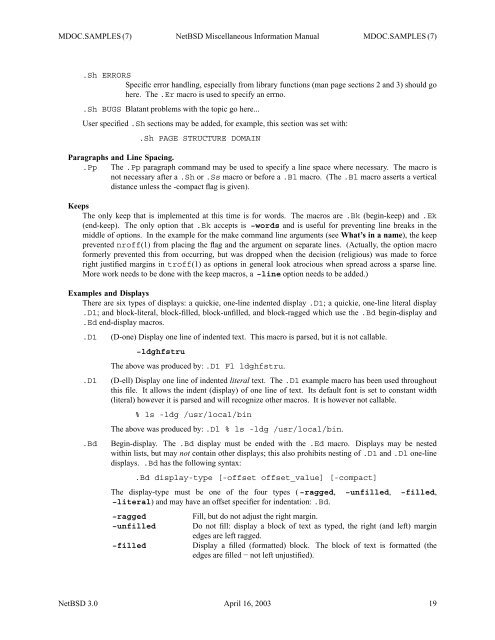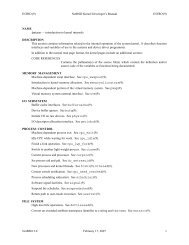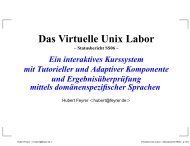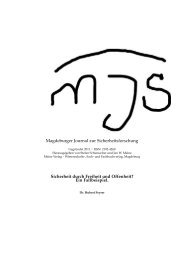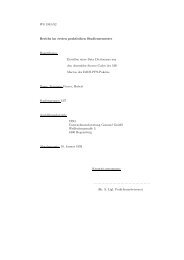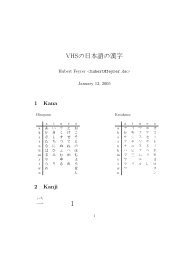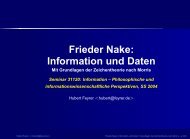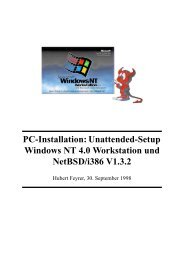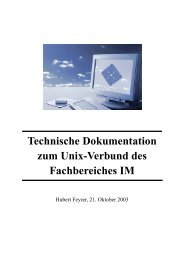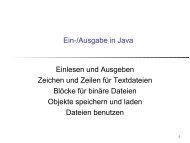INTRO (7) NetBSD Miscellaneous Information Manual INTRO (7 ...
INTRO (7) NetBSD Miscellaneous Information Manual INTRO (7 ...
INTRO (7) NetBSD Miscellaneous Information Manual INTRO (7 ...
Create successful ePaper yourself
Turn your PDF publications into a flip-book with our unique Google optimized e-Paper software.
MDOC.SAMPLES (7) <strong>NetBSD</strong> <strong>Miscellaneous</strong> <strong>Information</strong> <strong>Manual</strong> MDOC.SAMPLES (7)<br />
.Sh ERRORS<br />
Specific error handling, especially from library functions (man page sections 2 and 3) should go<br />
here. The .Er macro is used to specify an errno.<br />
.Sh BUGS Blatant problems with the topic go here...<br />
User specified .Sh sections may be added, for example, this section was set with:<br />
.Sh PAGE STRUCTURE DOMAIN<br />
Paragraphs and Line Spacing.<br />
.Pp The .Pp paragraph command may be used to specify a line space where necessary. The macro is<br />
not necessary after a .Sh or .Ss macro or before a .Bl macro. (The .Bl macro asserts a vertical<br />
distance unless the -compact flag is given).<br />
Keeps<br />
The only keep that is implemented at this time is for words. The macros are .Bk (begin-keep) and .Ek<br />
(end-keep). The only option that .Bk accepts is −words and is useful for preventing line breaks in the<br />
middle of options. In the example for the make command line arguments (see What’s inaname), the keep<br />
prevented nroff(1) from placing the flag and the argument on separate lines. (Actually, the option macro<br />
formerly prevented this from occurring, but was dropped when the decision (religious) was made to force<br />
right justified margins in troff(1) as options in general look atrocious when spread across a sparse line.<br />
More work needs to be done with the keep macros, a −line option needs to be added.)<br />
Examples and Displays<br />
There are six types of displays: a quickie, one-line indented display .D1; aquickie, one-line literal display<br />
.Dl; and block-literal, block-filled, block-unfilled, and block-ragged which use the .Bd begin-display and<br />
.Ed end-display macros.<br />
.D1 (D-one) Display one line of indented text. This macro is parsed, but it is not callable.<br />
.Dl<br />
.Bd<br />
−ldghfstru<br />
The above was produced by: .D1 Fl ldghfstru.<br />
(D-ell) Display one line of indented literal text. The .Dl example macro has been used throughout<br />
this file. It allows the indent (display) of one line of text. Its default font is set to constant width<br />
(literal) however itisparsed and will recognize other macros. It is however not callable.<br />
% ls -ldg /usr/local/bin<br />
The above was produced by: .Dl % ls -ldg /usr/local/bin.<br />
Begin-display. The .Bd display must be ended with the .Ed macro. Displays may be nested<br />
within lists, but may not contain other displays; this also prohibits nesting of .D1 and .Dl one-line<br />
displays. .Bd has the following syntax:<br />
.Bd display-type [-offset offset_value] [-compact]<br />
The display-type must be one of the four types ( −ragged, −unfilled, −filled,<br />
−literal) and may have an offset specifier for indentation: .Bd.<br />
−ragged<br />
−unfilled<br />
−filled<br />
Fill, but do not adjust the right margin.<br />
Do not fill: display a block of text as typed, the right (and left) margin<br />
edges are left ragged.<br />
Display a filled (formatted) block. The block of text is formatted (the<br />
edges are filled − not left unjustified).<br />
<strong>NetBSD</strong> 3.0 April 16, 2003 19


